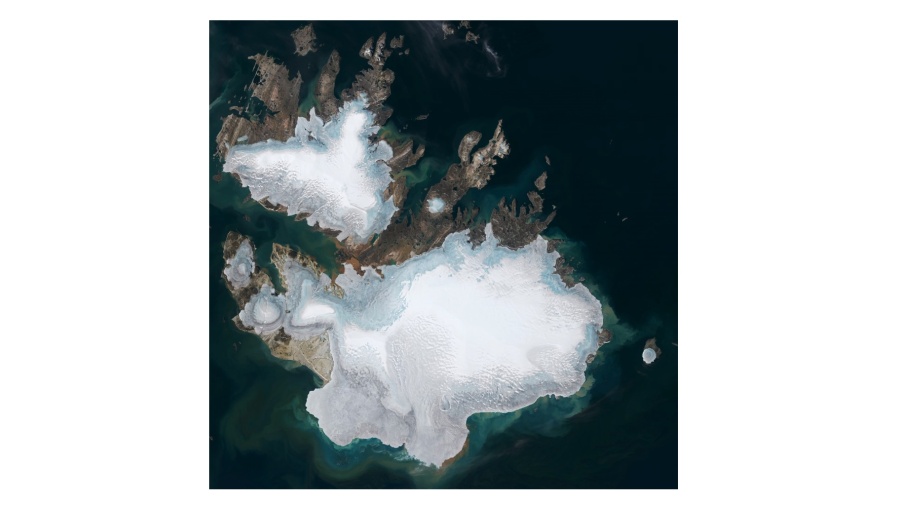Satellite images reveal unprecedented retreat of Acetic glacier on Svalbard archipelago

Satellite images from NASA have revealed unprecedented Arctic glacier retreat on the Norwegian Svalbard archipelago, The Barents Observer reported on August 19.
The Climate Crisis is changing the face of the Arctic as ice recedes at an accelerating pace. The fresh water it is releasing into the sea threatens to cause the collapse of the AMOC (Atlantic Meridional Overturning Circulation) which could happen as soon as 2025, but more likely sometime in the next few decades.
According to NASA data from August 9, Svalbard’s glaciers set a new record for daily surface melt this summer, shedding about 55mm of water equivalent on July 23—five times the normal rate -- and exposing the land, which is clearly visible in the images. The archipelago, mostly covered by over 2,000 glaciers, is experiencing some of the most rapid warming in the world.
"Svalbard is a hotspot for Arctic warming—it is warming around seven times the global average," Jemma Wadham, Professor in Glaciology at the Arctic University of Norway (UiT), said in an interview with The Barents Observer.
NASA noted that the striking swirls of colour seen in the surrounding waters are likely caused by sediment from the melting glaciers. The melt has also exposed areas of glacial ice, leaving them vulnerable to further warming.
The cloudiness in the water surrounding the glacier in the images is caused by the sediment in the ice and blocks light from reaching phytoplankton, which are essential for sustaining the coastal food chain, Professor Wadham explained, which will have knock on effects for the marine ecosystem in the region.
The extreme melting on Svalbard is part of a broader trend across the Arctic. A study from Northern Arizona University, published on August 15, 2024, revealed that the average Arctic-wide elevation at which snow remains at the end of summer has risen by 152 metres over the past 40 years. However, the glaciers on Russia's Novaya Zemlya have shown the least impact from melting compared to other Arctic regions like Alaska, Canada, Greenland, and Norway, The Barents Observer reported.
Scientists are watching Svalbard closely as it serves as an early warning system for the rest of the Arctic and helps understand how the wider Arctic will be affected by the accelerated melting of the ice.
As all-time record heat waves sweep the world this year, Svalbard has not been spared and recorded its highest-ever monthly temperature this month. On August 11, the temperature at Svalbard Airport, near Longyearbyen, reached 20.3°C, surpassing the previous record by two full degrees.
Glaciologists are increasingly concerned about the long-term impacts of Arctic melting, which could lead to significant disruptions in wildlife habitats and a continuous rise in sea levels throughout the 21st century.


Follow us online